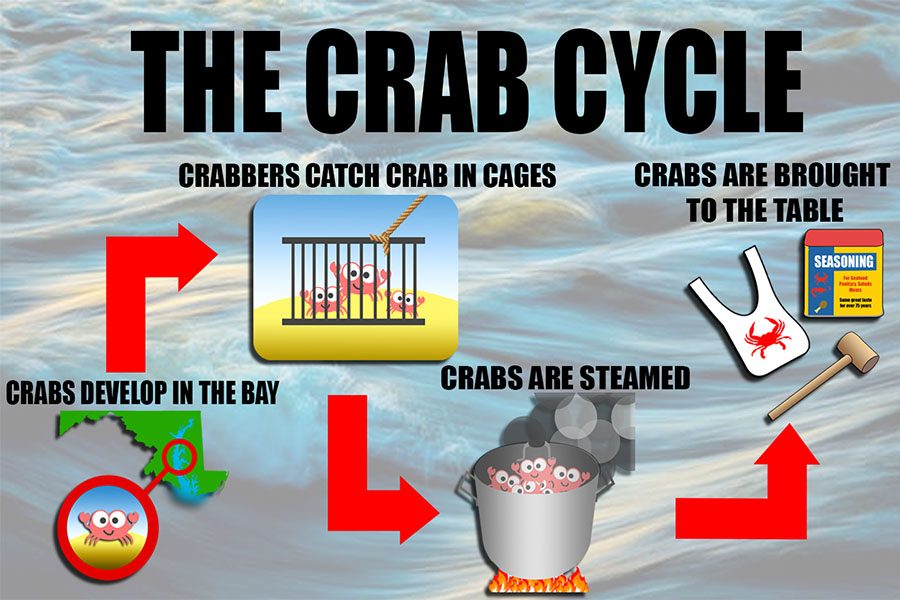Inside Look: Maryland Blue Crab Season
May 10, 2018
As the sun was rising, a young boy, about 10 years old, did what many Marylanders have prided themselves on for generations; he wiped the sleep off his eyes and dragged himself into his car with his father, the first step to embark toward the Bay to officially start their crab season.
But for junior Cole Nelson, he wasn’t just heading to the Bay to eat crabs, he and his father had a large net they used to catch the crustaceans themselves.
As April rolls around, the state of Maryland will once again welcome the return of crab season. But before the season starts, there is always the mystery of whether this season will fare better than the last, and the hope that it will be one remembered for decades to come.
“The crab population is coming back very well, so I think we could be in for a good year, but it’s still too early to tell. Crabs don’t completely come out until the water is at least 48 degrees,” Maine Avenue Fish Market manager Pete White said.
The Maryland blue crab is one of the most well known delicacies of the Chesapeake Bay. Getting crabs from the Bay to the table is a long process.
The first steps take place long before the season begins when the crabbers paint and prepare their pods–crab traps– to have ready when the season begins, White said. Next, crabbers wait until the waters are warm enough, at which time they set out for their spots in the bay, fishing for bushels of crab. Depending on the success of their catch, the crabbers will then ship their catch off to distributors where they can then be sold to the public or to restaurants to be served.
“We get all our crabs from local watermen, we’ve been working with them for 40 years and have created relationships with everyone we’ve worked with. We don’t get our crabs from big seafood companies, we have everything we need here,” Cantler’s Riverside Inn manager Alex Lemmon said.
Since the business of crabbers is much bigger than the three to four crabs caught by Nelson and his father–which they enjoyed for free–another big question for Marylanders every year is how much a bushel will cost.
“The market price of crabs is determined by a lot of different things. It depends on how the crabbers are doing. If they are catching a lot, they can sell [the crabs] for less, then we can sell our crabs for less and restaurants can charge less,” White said. “If crabbers are having a difficult time, they’ll sell their crabs at a higher price and customers will be charged more. It’s all about supply and demand, and a lot of it is determined by the crabbers,” White said.
Once crabs get to a restaurant, there is another process that occurs before the public starts to dig in.
“The first thing we do when we get the crabs is measure them, from point to point, and sort them by size. We have super, extra large, large and medium,” Lemmon said. “After we separate them we bring them to the steamer and cover them in Old Bay, then they’re ready to go out to the tables.”
The official crabbing season for 2018 is April 1- Dec. 15, with daily fishing hours normally from just before sunrise to 5 p.m.
As the crab business prepares for this season, many still recall the early end to last year’s season. Due to low population, the Maryland Department of Natural Resources decided to close the crab season early making the final crabbing date Nov. 20.
“It didn’t really affect us that much. At that point in the season the crabs were already quitting since it was getting really cold,” White said.
With the pending start to the season, families and friends make plans to sit down for hours at a time shucking crabs and conversing with each other over a bushel of fresh crabs. Whether it is the smell of Old Bay in the air or the process of picking meat out of the crabs, Marylanders will once again enjoy being the last step in a long process as those crabs travel from the sea to their tables of families.
“One of my favorite parts of spring is the fresh crabs that come back to the area. There’s nothing better than a dozen old bay blue crabs on a warm spring night,” Nelson said.




